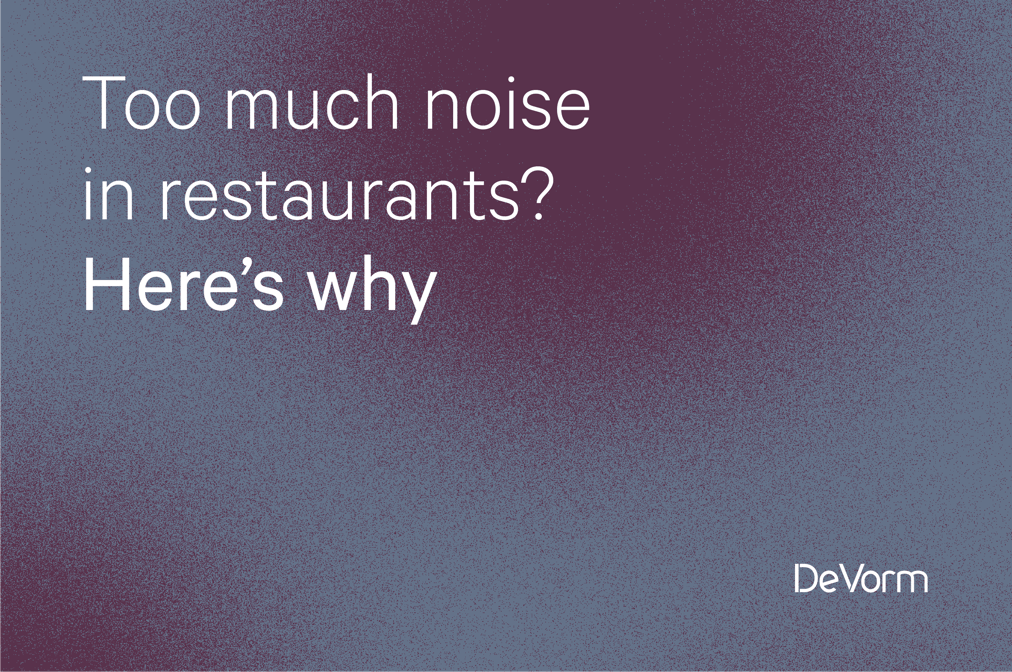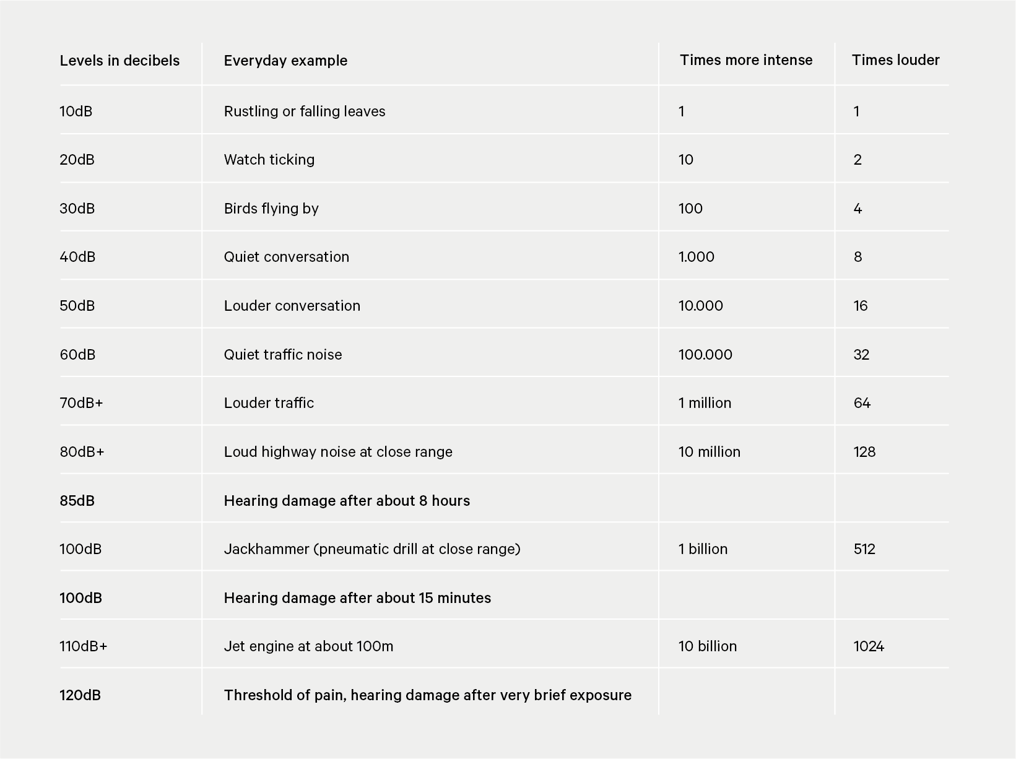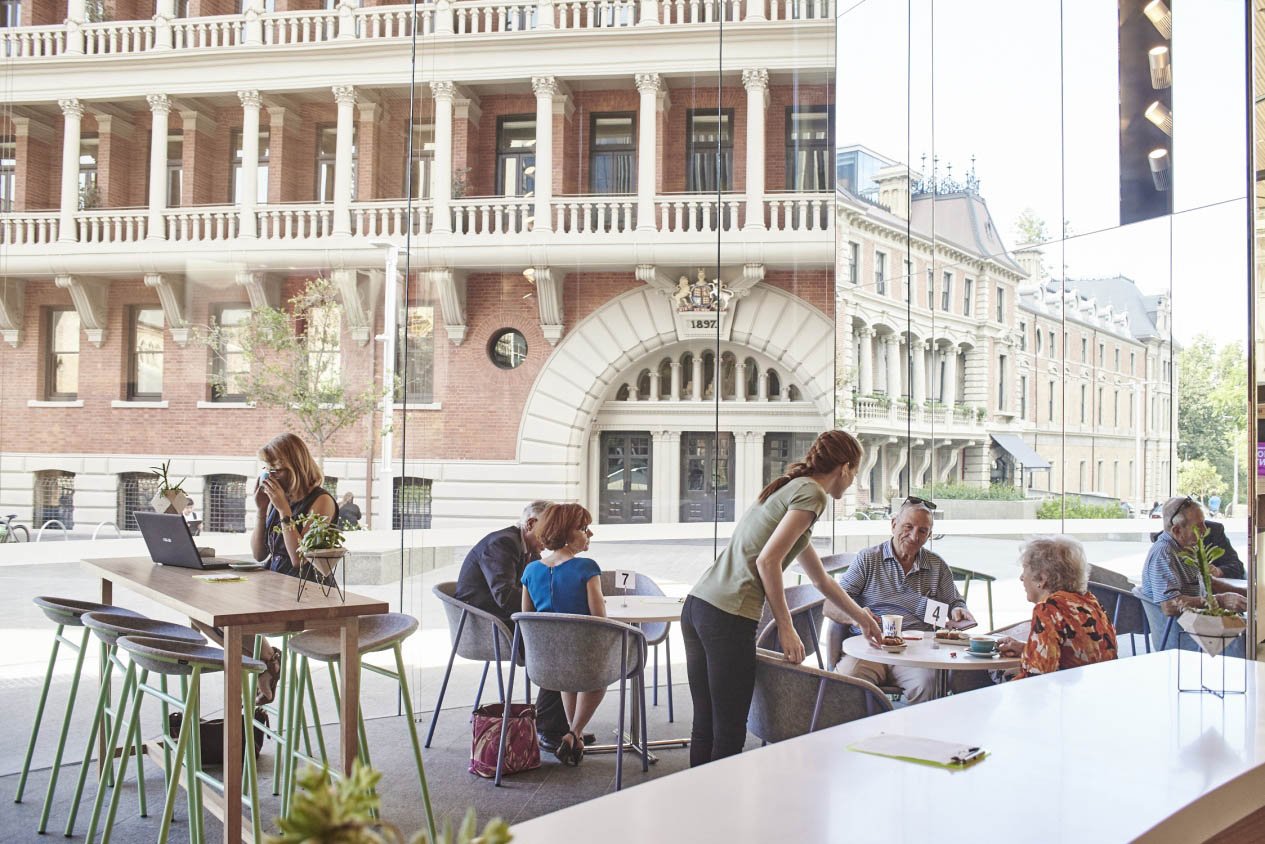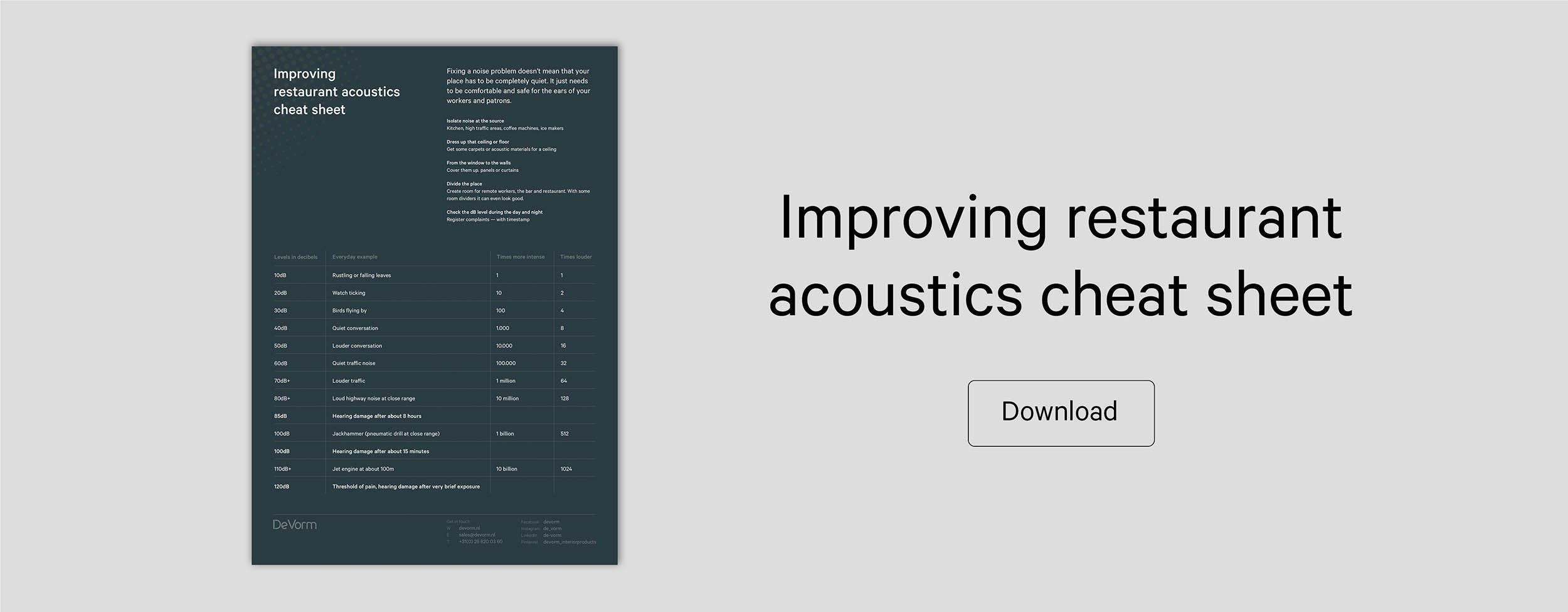Journal
Too Much Noise In Restaurants? Here’s Why
Acoustics — an often overlooked factor in restaurants, bars and coffee shops. Sometimes because it's simply forgotten but mostly because of budgetary reasons. Yet it’s often the first thing that gets retrofitted after opening. In this article we are going to dive deeper into the basics of acoustics and why it matters in hospitality.

Why acoustics matter in the hospitality business
According to a Zagat Survey, noise is the biggest complaint among restaurant-goers, even before poor service or substandard food. People who are offended by noise levels tend to leave early and are less likely to return. Noise is clearly not good for business. To make matters even worse, excessive noise is also shown to have a negative effect on taste.
Charles Spencer from the University of Oxford found that “both background noise and loud music can impair our ability to taste food and drink. It would appear that noise selectively impairs the ability to detect tastes, such as sweet and sour, while leaving certain other taste and flavour experiences relatively unaffected.”
Besides the influence that noise has on taste, consider the effect it has on socializing. Talking to and hearing your companions. To have a conversation without shouting to make yourself heard. As this article puts it:
“You go to restaurants to be social. These days, you often come out none the wiser of what the other person has said.”
Not only is loud noise a problem for patrons. It can also be a serious health hazard for the staff. Noise levels in restaurants regularly reach a mark of 90 decibels. Anything over 70 or 80 dB is considered harmful to hearing over time. Considering that the decibel scale is exponential, it means that when the noise goes from 80 to 90 dB, it is 10 times more intense and twice as loud.
 The Decibel Scale — From rustling leaves to jet engines, here’s a quick guide to some everyday sounds.
The Decibel Scale — From rustling leaves to jet engines, here’s a quick guide to some everyday sounds.
But it isn’t all bad. Music can have a positive effect on profitability. Fun fact: when the music gets 22% louder, visitors drink 26% faster. With loud music playing, it is harder to determine the alcohol content in their glass. But the big difference between noise and music is that music can be turned down and noise not.
Why are restaurants so noisy?
First of all, it is easy to determine how loud a restaurant is. Just download one of many decibel meters in the App Store or Playstore and you can easily get a good indication of your surrounding sound levels. If you own a restaurant or bar, and you are reading this, you might want to check out SoundPrint and see how you are doing. It is basically a Yelp for sound that helps diners find quieter bars and restaurants.
Most restaurants look good, but sound like a buzzing beehive when loud music starts to compete with the crowd. People compensate by talking louder and louder to each other, then the music volume goes up and a vicious noise circle begins. This is also known as the Lombard Effect.
The looks of today's popular and modern restaurants are actually part of the problem. Previously, fancy restaurants had table linens, heavy drapes, floor carpeting and textured wallpaper. All sound-absorbing materials that no longer fit in the minimalistic design trend.
The industrial or Scandinavian look is popular in restaurants and bars. But all that bare wood, open kitchens, stripped-down surfaces, high ceilings, stone floors and windows without drapes make the perfect recipe for a deafening din. This isn’t a recent problem — Washington Post restaurant critic Tom Sietsema started carrying around a decibel meter ten years ago. Since then, he also adds sound ratings in his reviews, but little has changed since.
 Saint Larry Café, interior design by Kerry Hill Architects
Saint Larry Café, interior design by Kerry Hill Architects
Keep track of reverberation time
Acoustics is the study of how sound travels through materials or space. Next to the decibel level, reverberation time is an important metric for background noise. Reverberation time measures how many seconds it takes an original sound source to decay 60 dB. The reverberation time is influenced by:
- • the volume of the room,
• temperature,
• existing absorptive materials in the room, e.g. furniture, objects, and people.
For a restaurant, the reverberation time should be 1 second. If the reverberation time is higher, then it becomes difficult to understand a conversation and people get distracted by noises from the other side of the room. To fix this, sound has to be absorbed before it can bounce back and forth within the room. Before minimalism became a trend, curtains, linen and floor carpets absorbed the cacophony. There also several good apps for iPhone and Android to measure reverberation time.
Now you know why acoustics matters in restaurants. To put it simply — noisy restaurants turn away the clientele. They are also a health risk for the staff and the biggest irritation for diners. Curious about what you can do to fix it, without breaking the bank? Read our blog on bringing down the noise in restaurants or download our free whitepaper on acoustics.



